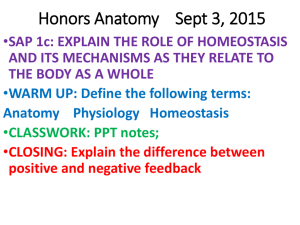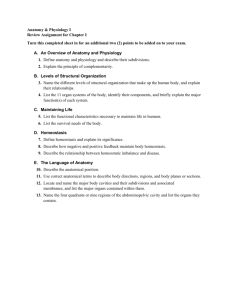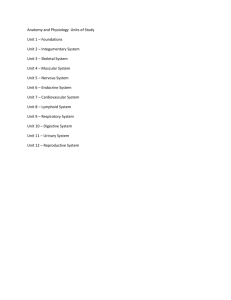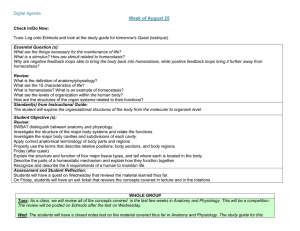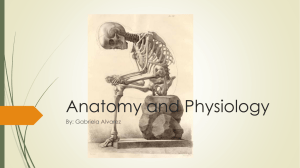Welcome to Anatomy & Physiology!!
advertisement
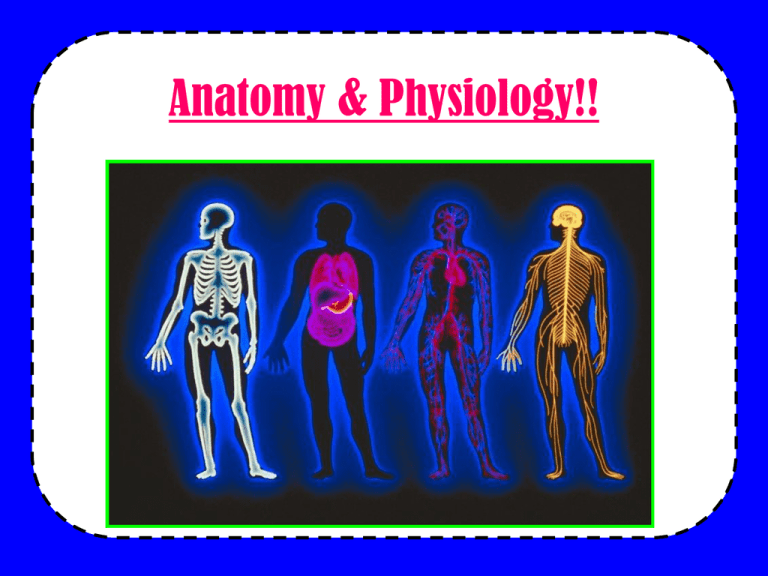
Anatomy & Physiology!! DO NOW • Lets review some biology… – How are our bodies organized? – What are the characteristics of life? – What factors do our bodies require for survival? – How do our bodies maintain homeostasis? Objectives • To define anatomy and physiology • To explain the biological levels of organization • To list and describe the major characteristics and requirements of life • To explain homeostasis and give examples of how the body maintains it Chapter 1 “Introduction to Human Anatomy and Physiology” Anatomy & Physiology • Anatomy: branch of science that deals with the structure of body parts. • Physiology: concerns the functions of body parts • *Why is it important to study these sciences? Requirements for Life 1) Water • Provides environment for chemical reactions to take place. 2) Food • Energy, build new materials, regulation 3) Oxygen • Releases energy from food 4) Heat • Determines rate of reactions 5) Pressure • Important in breathing Maintaining Life… • • • • • • • • Made of cells Responds to stimuli Grows and develops Reproduces Needs energy!! Adapts Maintains homeostasis Displays organization Homeostasis • Homeostasis= A stable internal environment • Maintained through homeostatic mechanisms. Homeostatic Mechanisms 1) Receptor - Provides information about conditions. 2) “Set point” - Tells what a particular value should be (ex: temp = 98.6) 3) Effector - Causes a response that alters internal evironmental conditions. Negative Feedback Homeostatic Mechanisms Levles of organization Levles of organization • Atoms moleculesmacromolecules (proteins, carbs, nucleic acids, lipids) • Macromolecules Cells Tissues organs organ systems Organisms! Anatomical Terminology
